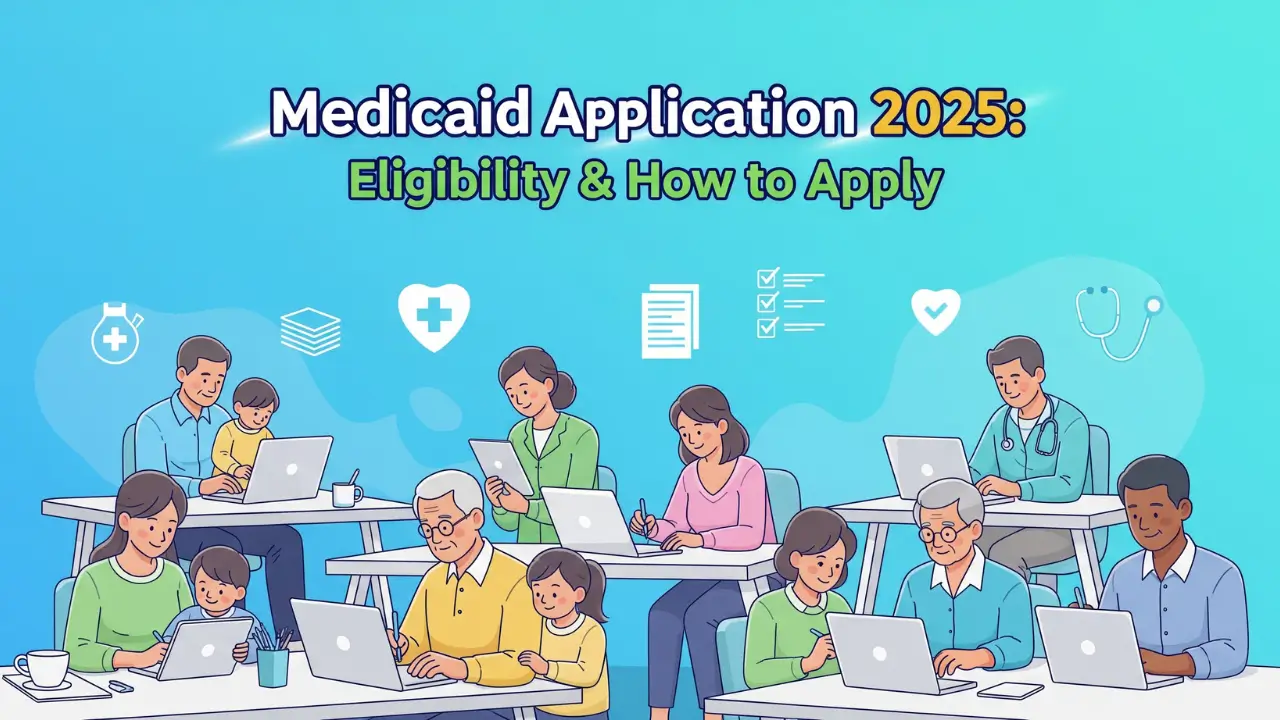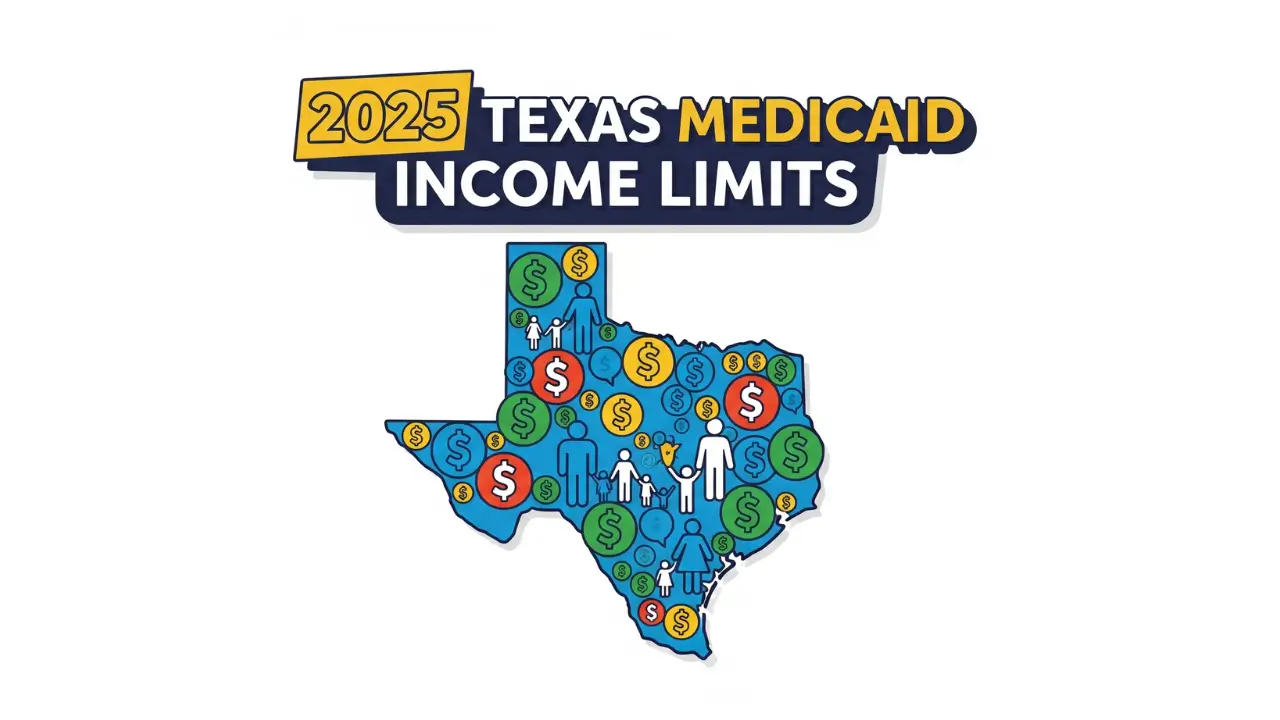In Arizona, Medicaid is called AHCCCS (Arizona Health Care Cost Containment System), and it provides affordable health coverage to families, children, seniors, and low-income adults.
For 2025, a single adult qualifies with an income under $21,597 per year, while a family of four may qualify if they earn below $44,367.
These updates come at a time when the “One Big Beautiful Bill” in Congress is reshaping Medicaid and SNAP rules, adding work requirements in some states and sparking debate over future coverage.
Key takeaways
- Single adult: Eligible if income is below $21,597/year (138% FPL).
- Family of four: Eligible if income is below $44,367/year.
- Children & pregnant women: May qualify at higher levels, up to 200% FPL.
- Arizona expanded Medicaid, so adults without children are also covered.
Policy trend: As Congress considers new work requirements, AHCCCS rules may shift in the coming years.
Arizona Medicaid Income Limits 2025 by Household Size
| Household Size | 100% FPL (Annual) | 138% FPL (Adults) | 200% FPL (Children/Pregnancy) |
| 1 person | $15,650 | $21,597 | $31,300 |
| 2 person | $21,150 | $29,187 | $42,300 |
| 3 person | $26,650 | $36,777 | $53,300 |
| 4 person | $32,150 | $44,367 | $64,300 |
| 5 person | $37,650 | $51,957 | $75,300 |
| 6 person | $43,150 | $59,547 | $86,300 |
Explanation:
Arizona follows the federal poverty guidelines used in the lower 48 states. Adults without children can qualify up to 138% FPL. Pregnant women and children are covered at higher limits, often up to 200% FP,L through Medicaid or CHIP.
Example: A family of four earning about $44,000 a year may qualify for AHCCCS coverage. A pregnant woman in a 2-person household could qualify even at incomes above the adult cutoff.
Understanding AHCCCS in Arizona
AHCCCS is Arizona’s version of Medicaid, and it has been in place since 1982. It works like other state Medicaid programs but is tailored to Arizona’s needs. AHCCCS covers doctor visits, hospital stays, preventive care, prescriptions, mental health services, and long-term care for those who qualify.
Because Arizona expanded Medicaid under the Affordable Care Act, more adults are covered compared to non-expansion states. This means low-income adults without children may qualify as long as they meet the 138% FPL limit.
Another unique feature of AHCCCS is that it often works through managed care organizations (MCOs). These are private health plans that contract with the state to deliver Medicaid benefits. This makes AHCCCS function much like private insurance, with assigned doctors and provider networks.
Who Qualifies for AHCCCS in Arizona?
Eligibility in Arizona depends on your group:
- Adults without children: Covered up to 138% FPL.
- Children: Eligible at higher levels, often up to 200% FPL. Arizona’s CHIP program covers kids above Medicaid limits.
- Pregnant women: Covered up to about 200% FPL, ensuring access to prenatal and delivery care.
- Parents: Covered if income is under 138% FPL.
- Seniors and people with disabilities: Qualify under income and resource limits, with added coverage for long-term care.
This layered eligibility system ensures that children and pregnant women don’t lose access to healthcare even if their family income is slightly higher than the standard adult cutoff.
Arizona’s Expansion and Healthcare Access
Arizona accepted Medicaid expansion, which means adults without children are included in coverage up to 138% FPL. This has significantly reduced the number of uninsured residents in the state.
The expansion has been especially important in rural areas and tribal communities, where healthcare access is limited. Expanded Medicaid has allowed thousands of residents to receive care they would otherwise have gone without.
How to Apply for AHCCCS in Arizona
If you want to apply for Medicaid in Arizona in 2025, follow these steps:
- Visit the AHCCCS website or start at Medicaid.gov.
- Use the online eligibility screening tool to enter your household size and income.
- Prepare required documents:
- Proof of income (pay stubs, tax returns)
- ID and Social Security number
- Proof of Arizona residency (lease, utility bill, or state ID)
- Proof of pregnancy or disability if applicable
- Proof of income (pay stubs, tax returns)
- Submit your application: Online, by mail, or in person at a DES or AHCCCS office.
- Keep your information updated: Report any income or household changes quickly to avoid losing coverage.
Alternatives If You Don’t Qualify in Arizona
If you don’t meet AHCCCS income requirements, there are other coverage options:
- KidsCare (Arizona’s CHIP program): Covers children in families with incomes too high for AHCCCS but still modest. It includes doctor visits, hospital stays, dental, and vision.
- ACA Marketplace Plans: If your income is above Medicaid levels, you may qualify for subsidies on HealthCare.gov. Premiums can drop to under $50/month depending on income.
- Community Health Centers: Offer sliding-scale healthcare services for people who fall into gaps in coverage.
FAQs: Arizona Medicaid 2025
Q1: What is the maximum income for a single adult to qualify for AHCCCS in 2025?
About $21,597 per year (138% FPL).
Q2: Does Arizona cover adults without children?
Yes. As an expansion state, adults qualify up to 138% FPL.
Q3: What about pregnant women in Arizona?
Pregnant women are covered at higher limits, often up to 200% FPL.
Q4: What is KidsCare in Arizona?
It’s Arizona’s CHIP program, covering children above AHCCCS income limits.
Q5: How often are income limits updated?
Every January, HHS releases new federal poverty guidelines.
Q6: Where can I apply for AHCCCS?
Apply through the AHCCCS website, Medicaid.gov, or at a local office.
Conclusion
Arizona Medicaid, known as AHCCCS, provides essential healthcare coverage for low-income families, children, pregnant women, and adults. With 2025 income limits set by the updated federal poverty guidelines, more people may find they qualify.
If you think you’re eligible, apply through AHCCCS today. Even if you don’t meet Medicaid rules, programs like KidsCare, ACA marketplace subsidies, and community health centers can help keep healthcare affordable.




